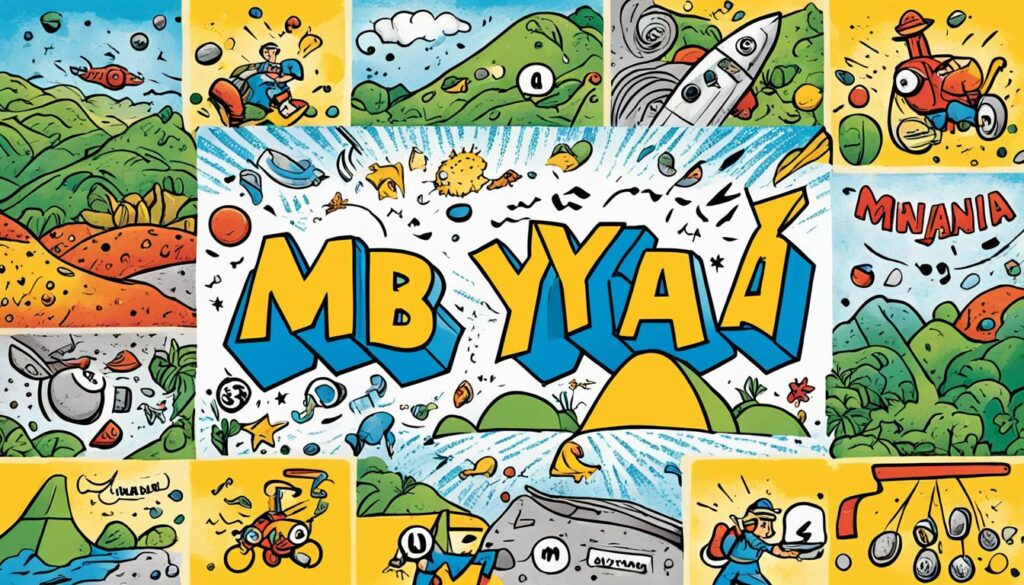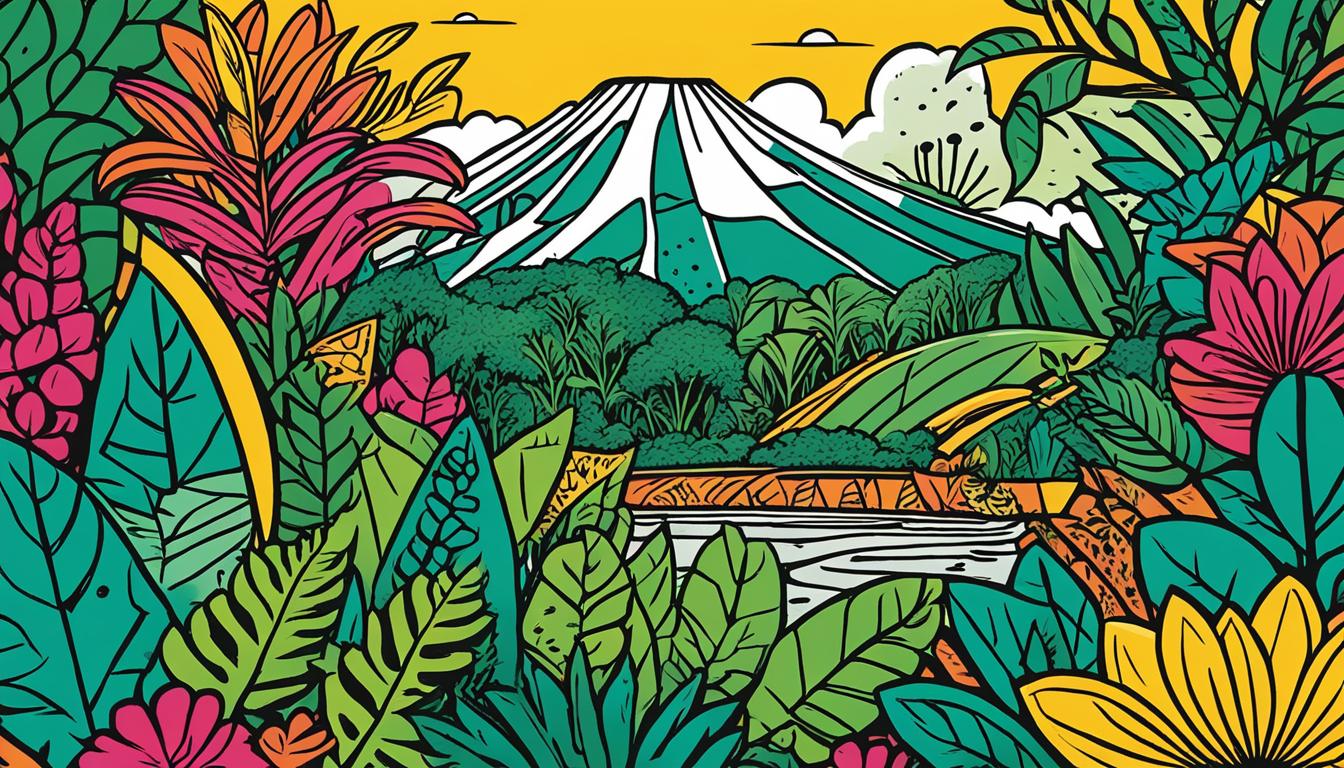Did you know that the Mbyá Guaraní language, spoken by the Guarani people, is an endangered indigenous language with only approximately 15,050 speakers? This rich and distinct language, native to Brazil, Paraguay, Argentina, and Uruguay, is a testament to the linguistic diversity of South America and the cultural heritage of the Guarani people.
Despite its importance, the Mbyá Guaraní language faces numerous challenges that threaten its existence. Globalization, language shift, and the dominance of other languages pose significant hurdles to the preservation of this endangered language. However, efforts are underway to revitalize and protect Mbyá Guaraní through language revitalization programs, education initiatives, and cultural preservation projects.
Join us as we explore the fascinating world of the Mbyá Guaraní language – its origins, geographic distribution, linguistic features, cultural significance, and the challenges it confronts. Discover how this indigenous language is not only a linguistic treasure but also a vital part of the Guarani people’s identity and history.
Language Family and Origins of Mbyá Guaraní
Mbya Guarani is a language that belongs to the Tupi-Guarani language family. Originating from the Guarani dialects, Mbya Guarani has evolved into a distinct language over time. It shares a close relationship with Ava Guarani, also known as Ñandeva. The speakers of these two languages often intermarry, reflecting the linguistic and cultural connections between them.
The Guarani people, who speak Mbya and Ñandeva, have a rich indigenous heritage that is deeply rooted in the history and traditions of Brazil, Paraguay, Argentina, and Uruguay. They have inhabited these regions for centuries, contributing to the linguistic diversity of South America. The Guarani people are an integral part of Brazil’s cultural fabric, with their languages and practices shaping their unique identity.
To understand the significance of Mbya Guarani, it is essential to explore the broader context of the Tupi-Guarani language family. This language family encompasses various indigenous languages across South America and holds immense cultural and historical importance. The Tupi-Guarani languages are known for their complex linguistic structures and nuanced phonological features.
“Mbya Guarani and Ava Guarani exemplify the indigenous heritage and linguistic richness of the Guarani people.”
Geographic Distribution of Mbyá Guaraní
The Mbya Guarani language is primarily spoken in the mountainous areas of the Atlantic Forest, encompassing regions in eastern Paraguay, Misiones Province of Argentina, and several states in southern Brazil, including Paraná, Santa Catarina, Uruguay, and Rio Grande do Sul. The Atlantic Forest, known for its rich biodiversity, provides a diverse and vibrant backdrop for the linguistic traditions of the Guarani people.
The Guarani people have a widespread geographic distribution, with communities located in both rural and coastal areas. This distribution is a result of their historical migration patterns and the geographic expansion of their territories. The linguistic diversity of the Guarani people is a testament to their adaptive nature and their ability to thrive in various landscapes.
Key Locations:
- Paraguay: The majority of Mbya Guarani speakers can be found in the eastern region of Paraguay, where they have historically inhabited the Atlantic Forest.
- Misiones Province, Argentina: Mbya Guarani is spoken in the Misiones Province of Argentina, an area known for its lush forests and scenic landscapes.
- Brazil: In Brazil, the Mbya Guarani language is present in several states, including Paraná, Santa Catarina, Uruguay, and Rio Grande do Sul. These states are home to diverse ecosystems and cultural heritage.
Considering the linguistic diversity of the Guarani people across the Atlantic Forest region, it is evident that the Mbya Guarani language holds immense cultural and historical significance in South America. This language serves as a bridge between past generations and future ones, preserving the unique traditions and heritage of the Guarani people.
| Country | Region |
|---|---|
| Paraguay | Eastern region |
| Argentina | Misiones Province |
| Brazil | Paraná, Santa Catarina, Uruguay, Rio Grande do Sul |
Linguistic Features of Mbyá Guaraní
The Mbya Guarani language showcases a diverse range of vowels and consonants, contributing to its distinct identity within the Guarani language family. Understanding the phonological aspects of this indigenous language provides valuable insights into its linguistic structure and phonetics.
Vowels
In Mbya Guarani, the vowel system encompasses front, central, and back vowels. These vowels exhibit variations in terms of nasalization and syllabicity, adding complexity and richness to the language. The vowel inventory in Mbya Guarani is an essential component of its phonological structure.
Consonants
Mbya Guarani features an array of consonant sounds, ranging from labials to alveolars, palatals, velars, and glottals. The consonant system in this language contributes to its phonetic diversity and expressive capabilities. Some of the phonological features and variations within specific consonant sounds in Mbya Guarani include nasal stops, approximants, and taps.
“The linguistic characteristics of Mbya Guarani, such as its diverse set of vowels and consonants, showcase the language’s phonological intricacies and contribute to its unique identity within the larger Guarani language family.”
Understanding the linguistic features of Mbya Guarani not only allows for a deeper appreciation of the language’s phonology but also emphasizes its cultural significance within the Guarani indigenous community.

| Vowels | Consonants |
|---|---|
| Front vowels | Labial sounds |
| Central vowels | Alveolar sounds |
| Back vowels | Palatal sounds |
| Variations in nasalization and syllabicity | Velar sounds |
Cultural Significance and Challenges
The Mbya Guarani language holds immense cultural significance for the indigenous Guarani people. It serves as a vessel for their history, traditions, and worldview, encapsulating their unique identity. The language provides a profound connection to their ancestors and serves as a medium through which their cultural heritage is transmitted across generations.
However, like many indigenous languages, Mbya Guarani faces significant challenges that threaten its survival. The language is endangered due to various factors, including the rapid pace of globalization, language shift towards dominant languages, and limited intergenerational transmission.
Globalization has brought about the increased dominance of major languages, which often overshadow and marginalize endangered languages such as Mbya Guarani. The ubiquity and influence of these dominant languages create an environment where speakers of endangered languages may choose to shift to more widely spoken languages in order to access greater economic and social opportunities.
Language shift, coupled with the lack of incentive for younger generations to learn Mbya Guarani, contributes to its decline. Without sustained and widespread use by younger community members, the language becomes imperiled as the number of proficient speakers diminishes over time.
“The loss of indigenous languages is not just about the disappearance of words; it is the loss of an entire cultural and intellectual universe.”
The Importance of Linguistic Preservation
Efforts are underway to preserve and revitalize the Mbya Guarani language, recognizing its vital role in maintaining the cultural heritage of the Guarani people. Language revitalization programs, education initiatives, and cultural preservation projects are being implemented to ensure the survival and continuation of Mbya Guarani.
Language revitalization programs aim to create learning opportunities and spaces where community members can actively engage with and immerse themselves in Mbya Guarani. These programs focus on language acquisition, literacy development, and cultural revitalization, fostering a sense of pride and connection among speakers.
Education initiatives play a crucial role in introducing Mbya Guarani as part of the curriculum in schools. By incorporating the language into the formal education system, younger generations have the opportunity to learn and appreciate their heritage language, strengthening their cultural identity.
Cultural preservation projects, in collaboration with the Guarani community, document and safeguard traditional knowledge, practices, and oral histories associated with the Mbya Guarani language. These projects serve as repositories of cultural heritage and ensure the transmission of essential cultural elements to future generations.
Preserving and revitalizing Mbya Guarani is not only essential for the Guarani people but also for the preservation of linguistic diversity and cultural heritage in Brazil and beyond. By nurturing and protecting this endangered language, we uphold the richness and uniqueness of indigenous cultures and contribute to a more inclusive and diverse world.
| Challenges | Solutions |
|---|---|
| Globalization | Language revitalization programs |
| Language shift | Education initiatives |
| Limited intergenerational transmission | Cultural preservation projects |
Conclusion
The preservation of the Mbya Guarani language is crucial for maintaining the linguistic diversity and indigenous heritage of Brazil and the Guarani people. As a distinct language within the Guarani language family, Mbya Guarani represents the rich tapestry of languages and cultures in South America. Efforts to protect and revitalize the language are vital to ensure its continued existence for future generations.
By preserving the Mbya Guarani language, we not only safeguard a unique linguistic heritage but also honor the indigenous communities who have upheld this language for centuries. The Guarani people, with their deep-rooted cultural traditions, have a significant connection to the language, and its preservation is integral to preserving their identity and way of life.
To promote linguistic diversity and protect indigenous heritage, it is important to recognize and support initiatives that focus on Mbya Guarani language preservation. Through community-led language revitalization programs, educational initiatives, and cultural preservation projects, we can actively contribute to the conservation of this endangered language and the preservation of the Guarani people’s cultural wealth.
FAQ
What is Mbyá Guaraní?
Mbyá Guaraní is a Tupi-Guarani Indigenous language spoken by approximately 15,050 people in Argentina, Brazil, Paraguay, and Uruguay. It is one of the Guarani dialects that have evolved into distinct languages over time.
How is Mbyá Guaraní related to Ava Guarani?
Mbyá Guaraní is closely related to Ava Guarani, also known as Ñandeva. Speakers of both languages commonly intermarry, and the two languages share similarities in their linguistic structure.
Where is Mbyá Guaraní spoken?
Mbyá Guaraní is primarily spoken in the mountainous areas of the Atlantic Forest, spanning eastern Paraguay, Misiones Province in Argentina, and the southern Brazilian states of Paraná, Santa Catarina, Uruguay, and Rio Grande do Sul.
What are the linguistic features of Mbyá Guaraní?
Mbyá Guaraní has a diverse set of vowels and consonants, including front, central, and back vowels, as well as labial, alveolar, palatal, velar, and glottal sounds. Specific phonological features and variations exist for nasal stops, approximants, and taps.
Why is Mbyá Guaraní endangered?
Like many indigenous languages, Mbyá Guaraní is facing the challenge of endangerment due to globalization, language shift, and the dominant influence of other languages. Efforts are being made to preserve and revitalize the language through various initiatives and projects.
What is the cultural significance of Mbyá Guaraní?
Mbyá Guaraní is a vital part of the indigenous culture of the Guarani people, carrying their history, traditions, and worldview. Its preservation is essential for maintaining their unique identity and promoting linguistic diversity.
How can Mbyá Guaraní be preserved?
The preservation of Mbyá Guaraní involves language revitalization programs, education initiatives, and cultural preservation projects. Support for these efforts is crucial in ensuring the continued existence of the language for future generations.
